| |
Hilarie Roseman, Australia
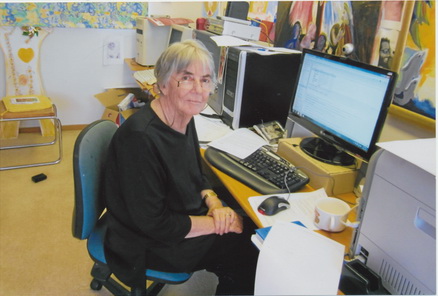 In Study, July 2010
In Russian: http://peacefromharmony.org/?cat=ru_c&key=34
--------------------------------------------------------------------------------------------------------------------
Dear Hilarie, I admire your courage, your devotion to life and peace, your colossal contribution to GHA for more than 12 years of our cooperation after my visit to Australia, Brisbane on Sociological Congress in 2002 with my first English bookTetrasociology: Responses to Challenges (www.peacefromharmony.org/?cat=en_c&key=145), which began our acquaintance. Your articles, poems and paintings were included in almost each of the GHA 8 books including Global Peace Science book. You wonderfully combine a philosopher, artist and poet rolled into one face of peacemaker. You became a Doctor of Theology in the ninth decade of life. I pray for you and sincerely sympathize with you. I am deeply touched by your concern and prayers for me in your state. I have not received yet your new art card but on my table is your card of the Virgin Mary that you have sent me even at Christmas 2011. It is a great work of art! You are a brilliant artist! Your drawing for emblem of harmonious civilization more than 10 years decorates the main page of our site "Peace from Harmony» (www.peacefromharmony.org) in the form of the Holy Spirit, which harmonizes the hearts of people of this civilization. Your main pictures of harmonious world will always be stored on our website on your personal page here: www.peacefromharmony.org/?cat=en_c&key=77 I am pleased to send you my five pages of updated in the discussion Philosophical Finale of GPS in attachment, which I hope can give you a new spiritual strength and new hope for peace among the people in the world. This Finale is now published here: www.peacefromharmony.org/?cat=en_c&key=649.
Merry Christmas! With love, you are always with me,
Leo
22/12/15 Dear Leo, hope you got my Christmas card.I am very pleased to see tht you have finished your work.You really must have a rest now Leo!! My message to you is that I am dying of breast cancer. They can do no more for me. I am at peace. I want to thank you for your friendship, and I will continue to pray for you now and also when I enter the Kingdom, whenever that may be.
With my love,
Hilarie 21/12/15
-------------------------------------------------------------------------------------------------
Dear Leo, congratulations.It has been an exciting adventure to have known you and worked with you.I truly honour the new work that you have done in your field, which you could only do by having a very solid platform of knowledge of sociology.I always pray for you, and I also give thanks to Jesus Christ for answering my prayer and helping you and protecting you.The people of the world will now acknowledge the huge amount of intellectual energy that you have given them as your legacy. With love from Hilarie Roseman Dear Leo, Yes, of course I will give you my affirmation.I am a BA and MA in communication.By BA is from Caulfield Institute of Technology, 25th October, 1988.My Masters in Communication (research) was completed in the year 2000, at RMIT Melbourne.My PhD in international communication (research) is ready for examination – here is the abstract: - Hilarie Roseman, PhD candidate International Communication, Macquarie University, Australia TRUTH, RECONCILIATION, AND FORGIVENESS IN MULTI-ETHNIC ABRAHAMIC RELIGIOUS ORGANISATIONS: AN EXERCISE IN DIALOGUE
ABSTRACT In interfaith encounter groups, the people of the Abrahamic religions are drawing together in dialogue rather than conflict. The core research question in this thesis is “How are people of Abrahamic faiths, faiths that are implicated in a geopolitical confrontation, able to cooperate within religious organizations?” The analysis is comparative. on the analectic continuum, it stems from a deductive set of questions, but takes into account some inductive emerging issues.15 participants, perceived as role models for the language of peace, were interviewed at great depth. Social, scientific, and religious knowledge from a questionnaire was discussed by four focus groups consisting of Jews, Christians and Muslims. Commitment to religion, enemy images of each other, ethical dialogue, forgiveness, and the construction of peace made up the discussions. Peace was constructed by remediation of negative attitudes and behavior which often involved hospitality and always involved deep listening. Differences and identities in Jewish, Christian and Muslim religions were clearly stated, but also their commonalities: human needs such as respect and safety, and the religious text to love God and neighbor.They defined this God as forgiving and compassionate, and neighbor as “everyone”. The language of peace included discussing difficult issues such as the re-examination of their texts, and the paramount need to be open, generous and brave. Their dialogue rose above differences to enable them to lay a reasonable, achievable foundation for a peace based on human needs and common texts. I also achieved a Diploma of art from East Gippsland TAFE College. I give thanks for the opportunity to be included in the list of people who have worked with Professor Leo Semashko. Hilarie Roseman March 6, 2011 -------------------------------------------------------------------------------------------------------------------
Ten Images of harmonious world Image one.
In the beginning there was the sacred unity, peace and harmony

Image Two.
Hearts beating together bring unity, life, and harmony
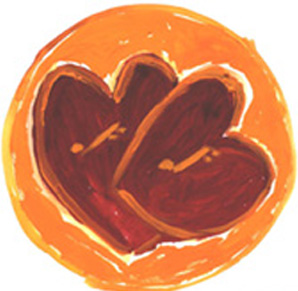
Image Three.
An intentional stepping out of this unity and harmony for personal power brought resentment, anger and lack of life into the world, both human and environmental.
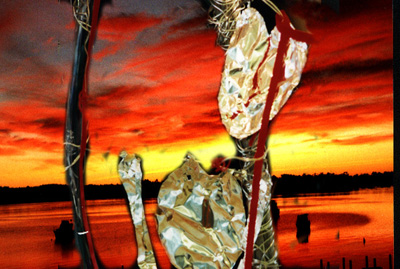
Image Four.
A community working together, looking for unity and harmony with all its heart, makes us think of the words of the Prophet Jeremiah.
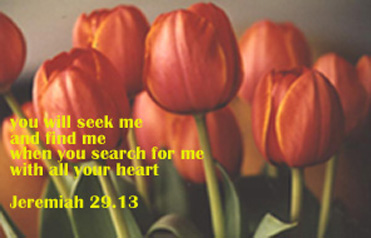
Image Five.
A community surrounded by love is beautiful.
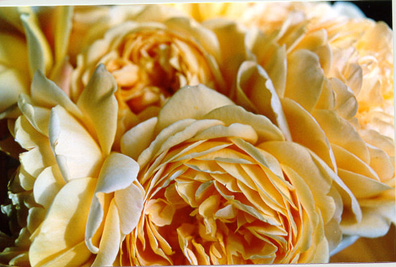
Image Six.
A community cries tears of joy to water the garden of the new harmonious creation of peace

Image Seven.
A community heals the heart that is broken
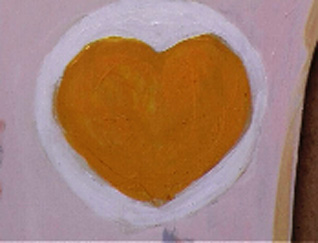
Image Eight.
Sacrifice, loving the other as you love yourself, is the harmony of the cross. The verticle points above to the beyond and is bound by chords of love to the horizontal, the now. The cross protects all those who shelter under it.
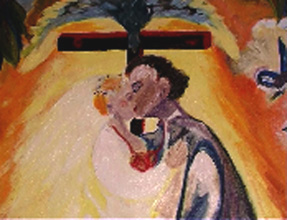
Image Nine.
With unity and harmony the world will experience the bounty of peace
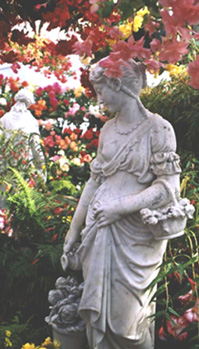 Image Ten.
The original body, bound by the chords of love to the cross, is the Word Incarnate, Jesus Christ. He dwelt among us, died for us, and it is With Him, In Him and Through Him that Christians believe they will return to the original unity, peace and harmony
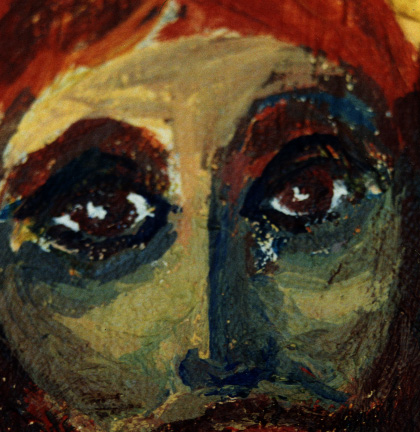
Harmony comes from a tetrad foundation of unity soaring into a symphony of peace
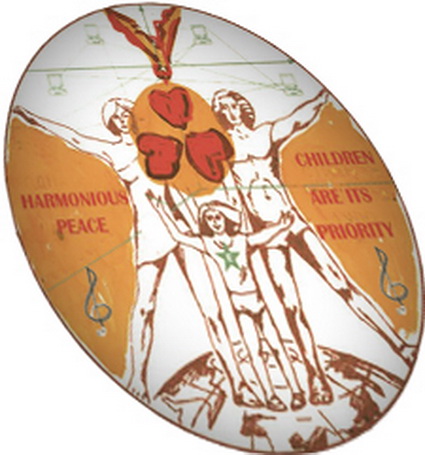
Symbol of a harmonious civilization for the GHA website
----------------------------------------------------------------------------------------------------
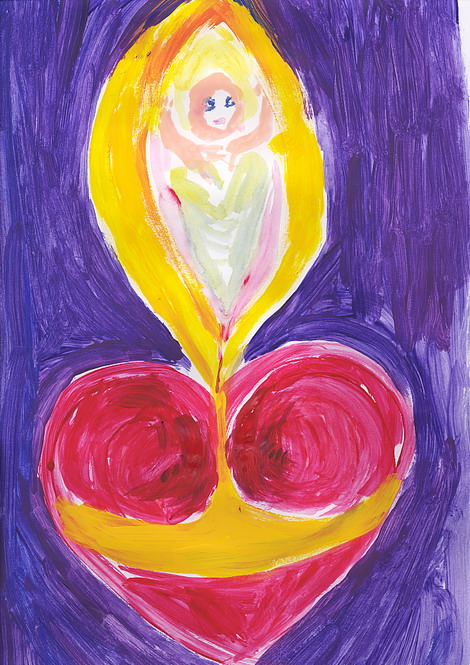
Love Open to Life
------------------------------------------------------THE CHILDREN
Hilarie Roseman
Easter 2007 Children “know” at level deep. Body formed with senses to keep knowledge, and use it to live. Grandchildren “ask” what does that mean? What does it seem To be for you?. Yes, that’s a heart You’re very smart, And what’s inside, A baby, beside, Hands outstretched for love. Let’s act it out Lets dance around, With hands held up And feet unbound The tetrad at our feet Girl boy, Boy, girl, the music beats And lifts us up with hearts of joy To carry life, and love 23/04/07 -------------------------------------- 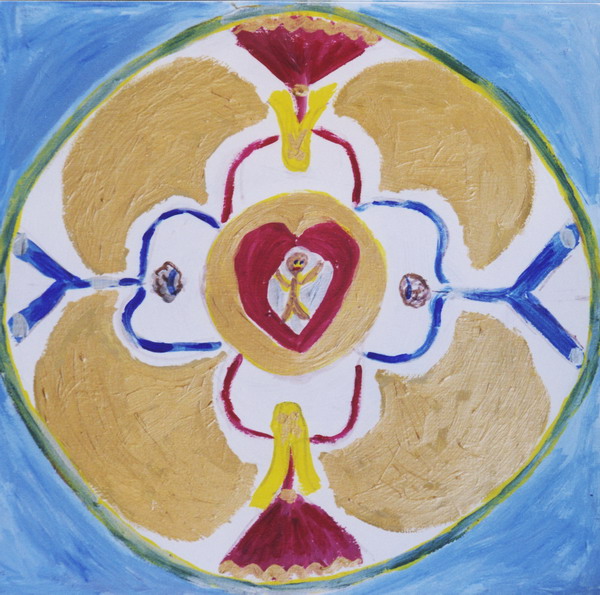
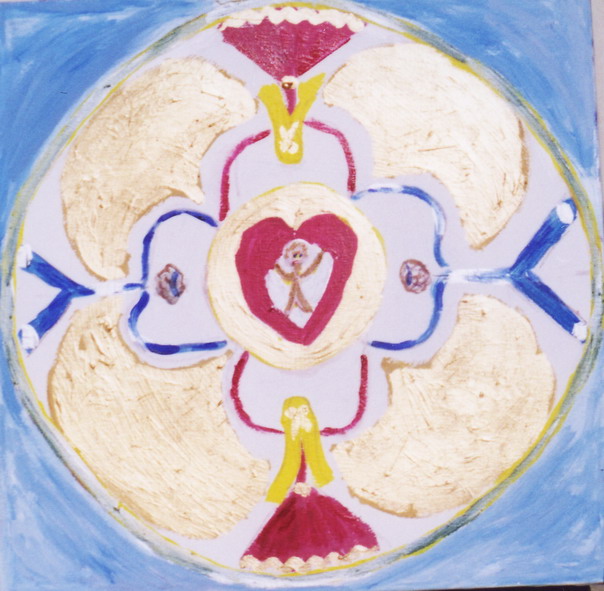
----------------------------------------------------------------------------------------------------------------------------------------------------------------------------------
2.5. Tetrasociology and McLuhan’s Communication Theory Hilarie Roseman, Australia, 2003 In this review I will consider the basic premises of tetrasociology (Semashko, 2002) from the point of view of McLuhan’s communication theory (1989). I will also refer to Berger’s sociological understanding of transformation (1963: 94-147). He sees Weber emphasizing subjective meanings, intentions, and interpretations (1922). We trust that Semashko’s intentions are good, but what of interpretation? McLuhan is able to help us, here, with his tetradic analysis. We are considering that our world institutions, and ordinary people, are being transformed on a global scale, with the old social stratifications and class systems changed into communicating spheres. Our everyday reality is constructed socially, and if our everyday lives are to be changed, they will be changed by people changing the system. McLuhan viewed a tetradic way of thinking as a four fold pattern of transformation. He used the tetrad, including past, present and future, to anticipate what will happen with new technologies. We are all being transformed, as a civilization, into a global village, but the trick is to know that there is a four fold pattern of transformation. He details this exhaustively in his book, written with the help of Bruce Powers,The Global Village, Transformations in world life and media in the 21stCentury,(1989: x-23). In the electronic age, he believes, we must address these issues: (1) At electronic speeds, all forms are pushed to the limit of their potential. What actually occurs is that the sender is sent, minus a body, and all the old relationships of speaker and audience tend to be erased. Humans become discarnate. (2) Instant information, as an environment, has the effect of pushing all other subliminal effects up into consciousness. When the environment of instant electronic information becomes the hidden ground of all perception, choice, and preference, the ground that underlies the world of precise and quantifiable scientific study is pushed aside or dissolved. (3) When data become available at electronic speeds, pattern recognition tends to replace quantifiable information. Transformation of a person, or of a society, has always come from people. But here we see the extensions of man, his technologies, transforming us. We have become the data, but we live, not in our bodies, but in data banks, discarnate. (4) Gestalt psychology, with its figure-ground paradigm, took a step away from visual space. However, and this is critical to an understanding of tetradic analysis, most psychologists still assume that both figure and ground are visual components, in visual situations. In fact, they form an iconic or tactile relationship, defined by the resonant interval between them. That is, there is no continuity or connection in the figure-ground relationship. Instead, there is a transforming kind of interface. We are becoming an interfacing, resonating world community. McLuhan and Powers present a model for studying the structural impact of technologies on society. This model emerged from their discovery that all media and technologies have a fundamentally linguistic structure. Not only are they like language, but in their essential form they are language, having their origins in the ability of man to extend himself, through communication, into the environment. A tetradic structure of this extension was discovered. All technologies (a) intensify something in a culture, while at the same time (b) obsolescing something else. They also (c) retrieve a phase or factor long ago pushed aside, and (d) undergo a modification (or reversal) when extended beyond the limits of their potential. The result is a four part metaphor of the transformation process. McLuhan’s tetradic understanding of the communication satellite is a working model of his theory. The satellite enlarges global information exchange, replaces language with images, retrieves a world view, and reverses into iconic fantasies. Each tetrad is the word or the logos of its subject. The tetrad constitutes a right-hemisphere-of-the-brain model of communication; it serves to bring up to date the ancient and medieval tradition of grammar-allied-to-rhetoric, in a way that is consonant with forms of awareness imposed on the 20th century by electronic technology. Acoustic space requires neither proof nor explanation, but is made manifest through its cultural (image-bearing) content. Building on this, I came to the conclusion that whoever controls our memory controls the world. Information may have brought down the old powers, but it is today forming a new world, with the cultural content of its entertainment. Even news has an entertainment component. Entertainment has become the electronic instrument of transformation. When I researched the Catholic community in Melbourne in 1991 (Roseman, 2000), I found it to have accessed a vast amount of information from the mass media, and thereby been transformed. Catholics were forgetting their own Catholic language, and were changing their beliefs dramatically. They were moving to a pragmatic model of morality, and their belief in the Catholic Church and its sacraments was disappearing. I believe, as a result of these trends, that we need to raise our consciousness, using both hemispheres of our brains to operate in the electronic age. Semashko is also asking us to raise our consciousness, to organize ourselves so that women and children, in particular, will have a balanced input into world affairs, especially since, at the present time, 'women’s work' is not even counted as part of the Gross National Product. Women as homemakers are not recognized as producers. How can McLuhan illuminate Semashko? His tetrad performs the function of myth, in that it compresses past, present, and future into one, through the power of simultaneity. The tetrad illuminates the boundary between acoustic and visual space (between right and left hemispheres of the brain) as an arena of spiralling repetition and reply, both of input and feedback, interlace and interface, in the area of an imploded circle of rebirth and metamorphosis. This is the complexity that we are moving into - and which so many sociologists are trying to understand. The tetrad helps us to see both the positive and the negative aspects of an artefact. I find it helpful to use tactile things, rather than words, to inspire deeper understanding. It’s restful just to sculpt or paint. For my Diploma of Visual Arts (2002) I sculptured aWired-in Woman with a Broken Heart. I wanted to feel, in wire, how it would be, to be discarnate. McLuhan says that, with the electronic media the human being is losing not only flesh, but some of their senses that go with the flesh. The woman has an antennae growing out of her brain, which she is now wearing outside of her skull. She is grasping, discarnately, for knowledge, which is all around her. Her nervous system is outside of her, and memory is part of the nervous system, so she is losing the memory of herself. Her interior communication system no longer works, because her heart is broken. While she is at one with the whole planet, she is alienated from herself. This alienation is a focus of Phillips',Beyond Sociology’s Tower of Babel(2002). He sees alienation is one of the most important issues that individuals and sociologists have to grapple with in the third millennium. Semashko’s vision of harmony helps to overcome this alienation. He comes from a completely different direction to a tetradic way of thinking. He treads the path of the ancient philosophers, with their four dimensional ideas, and views humans as having four cognitive abilities: sense, knowledge, opinion and sentiment. There are also four elements: earth, water, air and fire. As Anaxagoras (500-428 BC) says, the principle of mutual inclusion (interinclusion) of the foundation of the world is explained as «all in everything,» which Semashko says is the basic principle of tetrasociology. Tetrasociology develops its own indices. The question, ‘can sociology speak the language of mathematics?’ was left unanswered. When it is not clear what exactly should be counted, what indices, no mathematical apparatus can help. Semashko believes that, so long as sociology does not have its own indices, it will never acquire a mathematical apparatus and become a technology. The underlying assumption of tetrasociology is that we can achieve a harmonious world structure through scientific methods - methods that transform our understanding of the social into a technology. Scientific study can make us into a scientific people through the use of scientific methods. As I understand these methods, they require parameters and indices that measure the social space-time dimensions of the global world, so that sociologists will be able to make scientific analyses of sphere classes, the means by which social harmony will be achieved. By operating politically, in sphere classes, and achieving a common language and common belief, people can eradicate racism and violence and live in a democracy that is prosperous through harmony and shared information. I worry, at this point, that certain religions might be discriminated against. I am an ecumenist, and would always hope that religions can exist and function in freedom. But people can have a common belief in the fact that the world is one and that we need to make it harmonious. This is where I see Semashko's theory helping the world believe in itself, and working toward its survival. Semashko’s tetradic analysis is not based on language, although he has coined new words to describe it, but rather on the yearnings of philosophers and sociologists who have all, in various ways, defined tetradic foundations of society. Semashko introduces us to Social Space Time (SST), which constitutes tetrasociology’s backbone and foundation. Social space time is society itself. It is a four dimensional, physical, space-time continuum, with three spatial and one temporal set of coordinates: Resources, Processes, Structures and States. Semashko tells us that four-dimensionality is not a Pythagorean mysticism, but an epistemological principle of social construction of multi-dimensional reality in multi-dimensional theory. And this theory operates within the relativity of social space-time. Davies, a physicist,says that the word ‘relativity’ refers to the elementary fact that the appearance of the world about us depends on our state of motion; it is ‘relative’ (1995: 15-17). What Einstein discovered is that not only motion, but space and time are relative. Einstein restored time to its rightful place, at the heart of nature, as an integral part of the physical world. Indeed, Einstein’s ‘space-time’ is in many ways just another field, to be set alongside the electro magnetic and nuclear force fields. But the 'time' that enters into physical theory, even Einstein’s 'time,' bears only the vaguest resemblance to the subjective time of personal experience, the time that we know but cannot explain. Einstein’s time has no arrow: it is blind to the distinction between past and future. McLuhan’s understanding of the tetrad can help to resolve this problem, since his tetradic analysis encompasses past, present and future.. Semashko believes that society’s resources are society’s necessary components/parts, its permanent foundations, without which society cannot exist, and which it incessantly uses and reproduces. He distinguishes in each Social Space-Time (SST) co-ordinate four variable constants. Social statics consider society’s resources (the relevant SST co-ordinate) and points out four classes - necessary, sufficient, but differently prioritized…people, information, organizations, and things - PIOT. When we see this drawn out on the back cover of Semashko’s bookTetrasociolgy: Responses to challenges,we see a cross in the middle of a diamond square with a sphere on each ending of the cross. ‘People’ are placed at the top end of the cross. People, he says, rank the highest in priority among resources, because only people produce all PIOT resources. ‘Information’ is to the left arm of the cross. 'Organizations' (political, law, financial, managerial, relevant norms) on the right of the cross (are they always to be right wing!). It is the fourth dimension in which I am most interested. The cross has to be grounded. It is grounded in 'THINGS.' Things would have to be material, and it is placed well into the ground. Are 'things' the ground of the figure? In other areas of tetrasociology we see the interaction of the grids. People are put into spheres according to their employment .. there is the humanitarian class, the information class, the organizational class and the technical class. Eventually there are four continuum’s constructed (2002: 90). There is a grid showing each axis (of resources, processes, states and structures) interacting with each component of the social (human, information, organizational, and material). Semashko says that social space is multidimensional, having more than three dimensions. We live in the parameter of a cross! It looks to me as though we are reaching for the sky, arms open, but grounded, enclosed in the planet earth. I do not see a center in any of the diagrams, in words or in the drawings. However, on examining the book more closely I do see something that can be put at the center. Semashko says that 'love' is the pivot of personality, the backbone of the individual’s character. In love, as process, employment energy and relations between persons mix. Expending this mixture does not impoverish, but rather enriches each person. Without love, the supreme feelings and values constituting the individual’s spirituality lose their authenticity, and prove faulty and defective. How can we not agree with these understandings? When we look at the drawings, again, we see love, consciousness, will, and body are all put up on the same cross. Love is at the top, consciousness to the left, will to the right, and body goes into the ground. We are, indeed, all grounded by our bodies, but the future is not absolute. We belong to the universe, now, and have started to explore it. What will be our 'ground' in a discarnate universe? To try to mesh together the tetradic theories of McLuhan and Semashko, it occurred to me that Semashko is definitely putting forward an informational technology, an extension of man, by trying to study us as a social-scientific project, with indices to set definite parameters. So I will ask McLuhan’s questions of tetrasociology: (A) What does Tetrasociology enhance? It gives representation to sphere classes, sphere democracy, and new sociological statistics, information, and cultural technology. Among the spheres, which are equally necessary for societal reproduction, there is an indissoluble connection, communication, and interdependence. The law of sphere classes is an aspiration to balance, to harmony. In contrast, branch classes, such as business cartels, are seen as leading to disharmony and to domination. (B) What does Tetrasociology make obsolete? Monism in general, Marx’ economic materialism in particular, including Marxist classes, branch organizations, and branch social structures, along with the disharmony they produce. This is a very large transformation, and will have to be tried out in small experiments, to see if it is efficient. Perhaps young people of the world can be educated into this system. It is a constructed reality, that can live and grow if enough people see that it will help us to live in a world where we are accepted, and where we can hope for a future without war. (C) What does Tetrasociology retrieve? It retrieves the hopes of the ancient philosophers, the principle of mutual inclusion (interinclusion of the whole and its parts) as the foundation of the world: «all in everything», which is also the basic, dialectical principle of tetrasociology, and of many other social theories that have visualized sociology as having a foundation of four, interconnected parts. (D) What does Tetrasociology reverse into? A technology pushed far enough tends to reincorporate the user. What is dimmed down? Surely a sense of geographic place. In a world composed of sphere classes, world leaders will be able to put the whole world first, ahead of any of its parts. Will resources, processes, structures and states be able to support spinning spheres that communicate so much that they will intermesh? Will individual identity be lost? This would not be intended, but might become an unintended consequence. McLuhan tells us that the trick in transformation is to recognize the four fold pattern of transformation before it is completed, so that reversals may be anticipated as potential problems. The human being needs to be accepted, and to live in peace with others. In this era of vast number of refugees, begging us to help them survive, politically and economically, it is good for us to consider how to transform the social life of the world. Each society produces the ideas it needs, and maybe the global society needs Semashko’s ideas now. His intentions are good. How are we to interpret his theories? Can we help him put into action his plan for a harmonious and peaceful world? Will we change the world with him? A final word about business. In further work by Semashko, in his abstracts for the 36thWorld Congress of the International Institution of Sociology in China, we find a continuation of his thought. In Abstract 8 he says «the sphere is a complex of branches which is incorporated by one subject/product and reproduces a resource necessary for a society.» I was hoping that business would, in Abstract 12, be included in «a global world needs a global form of united democracy, that does not impinge on nations, cultures, traditions and political specificity.» What will this mean to business? Semashko replied that «Yes, each sphere is a complex of branches. The list of branches of each sphere I give in the tables on pages 61-68 of my book 2002. Each branch includes a business as private/free enterprise. Yes, the business is not always good, it frequently is greedy, does not know a measure. Therefore it requires the control and public restrictions. The reasonable and harmonious restrictions for business (and also for branches) can be established only by sphere organization of the social reproduction and the sphere organization of a power and State. WHAT restrictions? I do not know (this is concrete needs of the future, but in different countries and cultures they will be different. They will be relevant to the harmony, traditions and specificity.» I then dialogued with my husband, who has written a book,The Spirituality of Earthy Things(Roseman, 1997: 45-48, 71-72). He agreed with Semashko. While profit is good, unreasonable mark-ups and sophisticated sales techniques can deceive people. From motivations of greed and dishonesty there comes exploitation. Starvation is an abomination. The problem is one of distribution, tied up with economical conditions, politics, subsidies and power. He, like Semashko, has a vision of transformation. We must not passively accept the status quo. We must act to bring about change. Food should be as cheap as possible. This could mean subsidies for the growers, stores and distributors. These subsidies would be paid by taxes. Is transformation of the world possible? Semashko sees all human beings as capable of producing something for society, no matter what their status or monetary position. We can support him, and dialog with him, and share his vision of a harmonious world. References: Berger, P. L. (1963).Invitation to sociology, A humanistic perspective. Middlesex, England: Penguin. Davies, P. (1995).About time.London: Penguin. McLuhan, M. & Powers, B. R. (1989).The global village, Transformations in world life and media in the 21st century.Oxford: Oxford University Press. Phillips, B. (2002).Beyond sociology's Tower of Babel: Reconstructing the scientific method. New York: Aldine. Roseman, H. (2000). Catholic access of mass media messages on sex. M. A. thesis, Communication. Melbourne, Australia: RMIT. Roseman, J. B. (1997).The spirituality of earthly things. Australia: Spectrum Publications. Semashko, L. (2002).Tetrasociology: Responses to Challenges.Technical University, Russia, St. Petersburg Weber, M. (1922).Wirtschaft und Gesellschaft.Tubingen: J.C.B Mohr (P. Siebeck). Hilarie Roseman, M. A. Communications research (2000). Diploma of Visual Arts (2002). 30 Metung Road, Metung, 3904 Victoria, Australia. E-mailroseman@net-tech.com.au Read more: http://peacefromharmony.org/?cat=en_c&key=149
Up
|